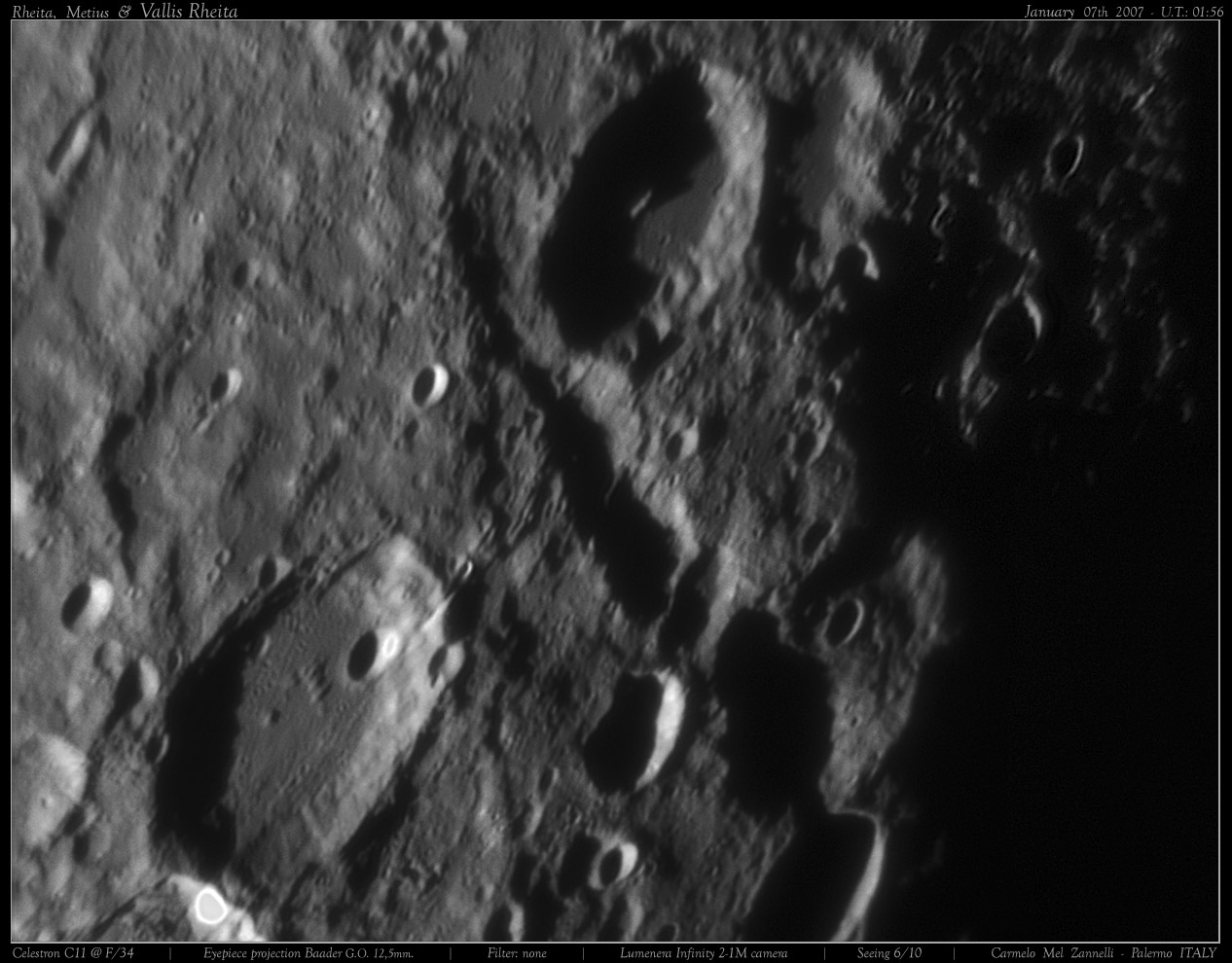Difference between revisions of "March 24, 2009"
| Line 14: | Line 14: | ||
<br /> | <br /> | ||
<strong>Related Links</strong><br /> | <strong>Related Links</strong><br /> | ||
| − | Rükl plate [ | + | Rükl plate [https://the-moon.us/wiki/Rukl+68 68]<br /> |
Carmelo's [http://www.carmelozannelli.com/ website] - coming soon (but a nice title page already)<br /> | Carmelo's [http://www.carmelozannelli.com/ website] - coming soon (but a nice title page already)<br /> | ||
<br /> | <br /> | ||
Revision as of 18:29, 18 August 2018
Lovely Rheita

image by Carmelo Mel Zannelli, Palermo, Sicily - Italy
Designers always want white spaces to be respected as part of the layout. On the Moon it is the dark spaces that sometimes define an object. In this case it is the long line of shadows that says, these craters are somehow different. The clue to their origin comes from noticing that the line is approximately radial to the Nectaris impact basin. This is one of the best visible examples of a secondary crater chain created by small mountains ejected during the formation of an impact basin. This Rheita Valley is named for Rheita, the 70 km wide crater that overlaps the chain just below its snake-like head. At its other end the same size crater Young has two or three secondaries superimposed on it, and must therefore, not be younger, but rather older, than the chain. So Young is older than the Nectaris Basin and Rheita is younger.
Chuck Wood
Technical Details
Jan 7, 2007, 1:56 UT. C.11 @ F/34 - Lumenera Infinity 2-1M camera without IR-Cut filter
Related Links
Rükl plate 68
Carmelo's website - coming soon (but a nice title page already)
Yesterday's LPOD: Last Century's Photo
Tomorrow's LPOD: Live From Houston, It's LPSC 40!
COMMENTS?
Register, Log in, and join in the comments.



